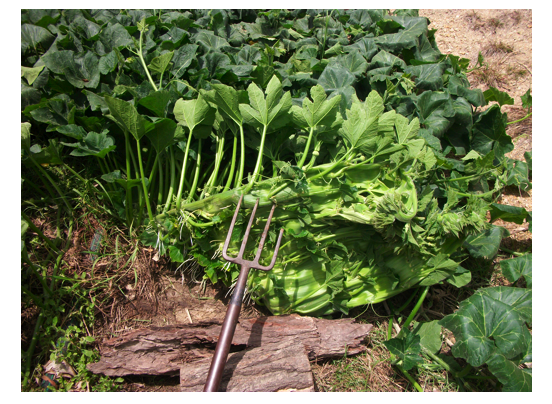 I was asked a question by someone contacting the Australian Institute of Horticulture website (www.aih.org.au) about a strange looking pumpkin. I suggested a possible solution and so the pumpkin owner sent me some photos to see if I could confirm the diagnosis. I’m sharing the photos today so if the same thing happens in your garden, you’ll know what it is.
I was asked a question by someone contacting the Australian Institute of Horticulture website (www.aih.org.au) about a strange looking pumpkin. I suggested a possible solution and so the pumpkin owner sent me some photos to see if I could confirm the diagnosis. I’m sharing the photos today so if the same thing happens in your garden, you’ll know what it is.
It’s called ‘fasciation’. And it’s symptoms are shown by a fusing of the plant cells, sometimes resulting in a fusing of fruit for leaves. You might have seen this at the greengrocer if you’ve ever picked up a con-joined banana or “twin” fruit.
Here, as seen in the photos, we have a fusing of the stems into one complete mat covering the ground. The leaves and pumpkin fruit may be totally unaffected by fasciation. I have actually seen this in a garden I visited last year as well, and someone asked me exactly the same question as we strolled through his garden looking at his pumpkins. Again, the fruit was totally unaffected and vigour of the plant was good.
 It is the result of an over production of hormones in a particular part of the plant, stimulating more cell growth in that area. The cause of this is a bit of a mystery, but suggestions range from random mutations to toxic pesticide use.
It is the result of an over production of hormones in a particular part of the plant, stimulating more cell growth in that area. The cause of this is a bit of a mystery, but suggestions range from random mutations to toxic pesticide use.
Our pumpkin grower here advised me that they had not used any pesticides or any artificial fertiliser. So I ruled out the latter and suspected it was simply a random mutation that sometimes occurs in nature. Some plant breeders actually harness this mutation in some ornamental plants, taking cuttings from the affected plant so that a new and irregular variety is established.
In some instances fasciation can also occur as a result of frost or other environmental damage, bacteria or virus.
For more information on fasciation, photos and possible causes go to
http://www.coopext.colostate.edu/TRA/PLANTS/fascia.shtml





 Twitter
Twitter Facebook
Facebook
🙂 I just discovered my pumpkin vine has this condition. It’s really quite weird. I’ll be letting it grow so I can follow it’s progress. 🙂
cheers
Jeanette
Let us know how you go.